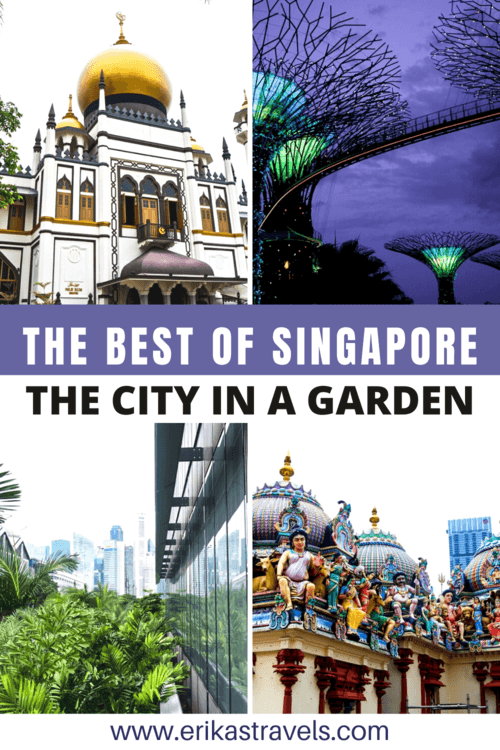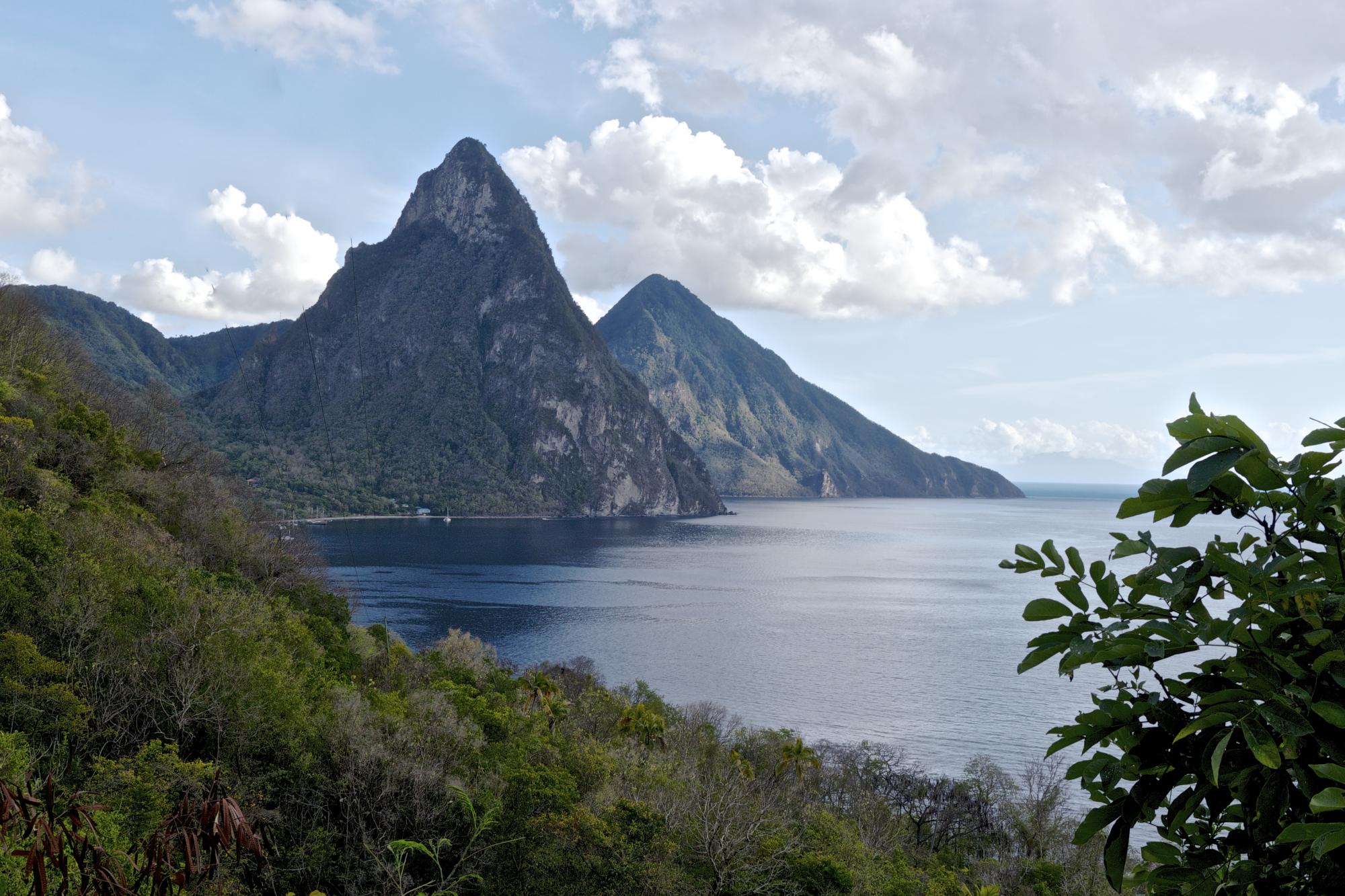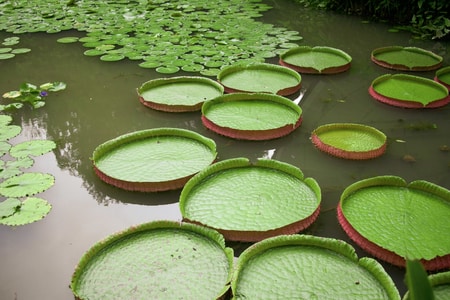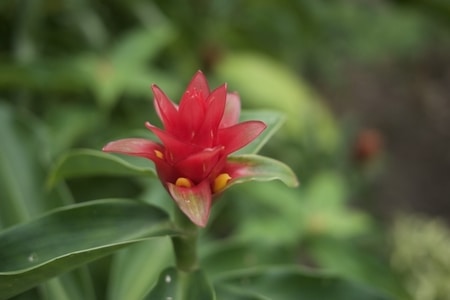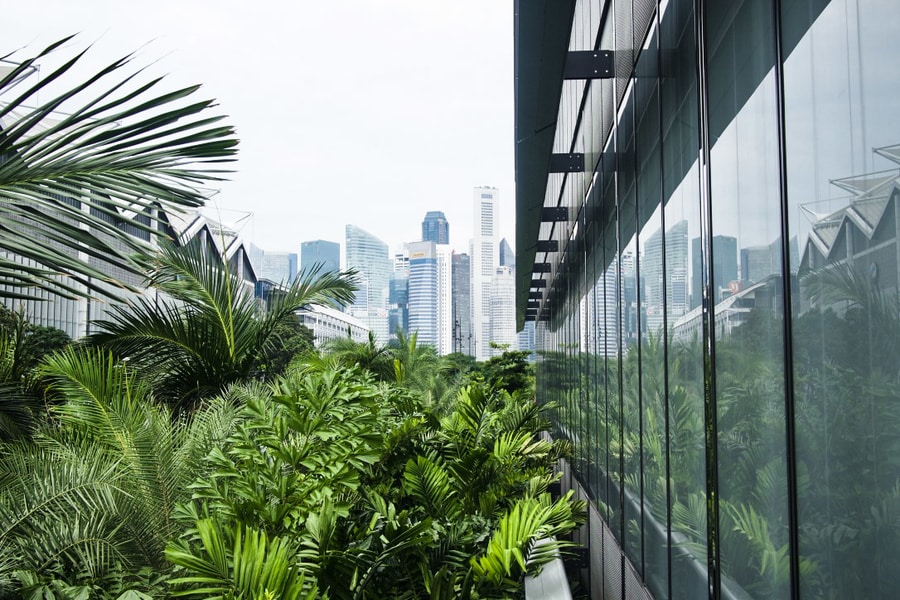
Top Singapore Attractions and Highlights
Organized, efficient and squeaky clean, Singapore is a small island nation that packs a lot of punch into its neat and tidy borders.
In a country where littering, jaywalking and forgetting to flush the toilet can incur hefty fines, the sense of cleanliness and discipline is palpable.
Yet, despite its order, Singapore is not sanitized or sterile. Instead, it is colorful and vibrant and culturally diverse.
Singapore’s world-class attractions and architecture give the city a feeling of being both forward-thinking and modern, yet also deeply rooted in its multi-layered history.
SINGAPORE TOURIST ATTRACTIONS
Singapore is a place where you can spend one minute exploring ethnic enclaves, and another strolling through leafy jungles.
Thanks to its holistic approach to urbanization, the small nation-state has a little bit of something for everyone—whether you’re a shopper, a bird watcher, an art lover, a foodie, a history buff, or anything in between.
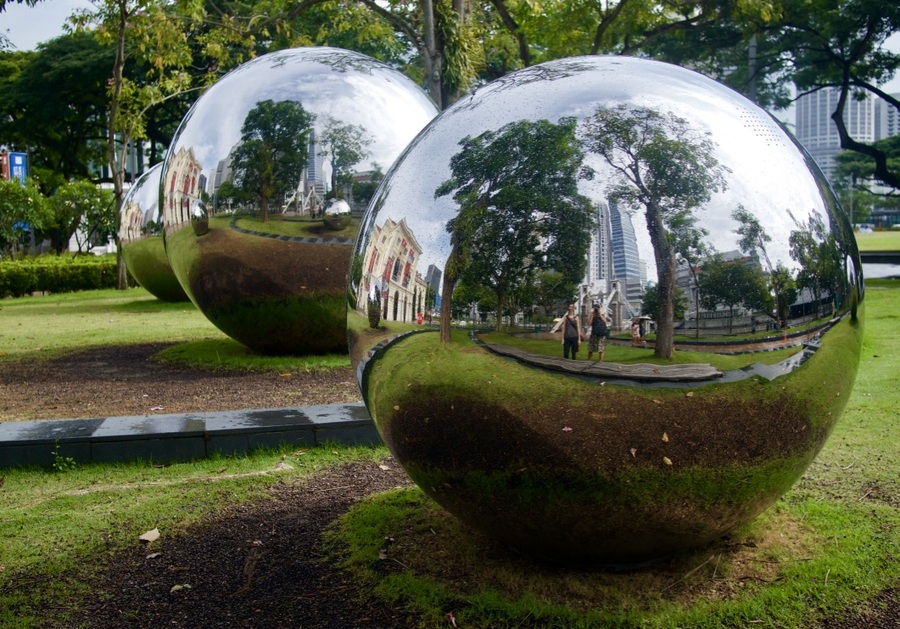
Even if you’re only in town for a quick visit, exploring Singapore’s top highlights and attractions will give you a sense of the forces at play in Southeast Asia’s dynamic and multi-layered micro-nation.
ETHNIC NEIGHBORHOODS IN SINGAPORE
Singapore is one of the world’s smallest countries. It is also a place where the full cultural scope of Asia is compressed into a handful of districts.
And while Singapore has raced headfirst into the future, its Indian, Chinese, and Malay neighborhoods are a testament to the rich history that remains etched into the city’s colorful multi-ethnic fabric.
LITTLE INDIA: A COLORFUL SINGAPORE HIGHLIGHT
Little India offers a glimpse into Singapore’s gritty past. It is a frenetic area that overflows with the smells, sounds, and colors of Asia’s subcontinent.
In Little India, spice traders hawk their wares, colorful homes line the streets, and the smell of curry lingers in the air.
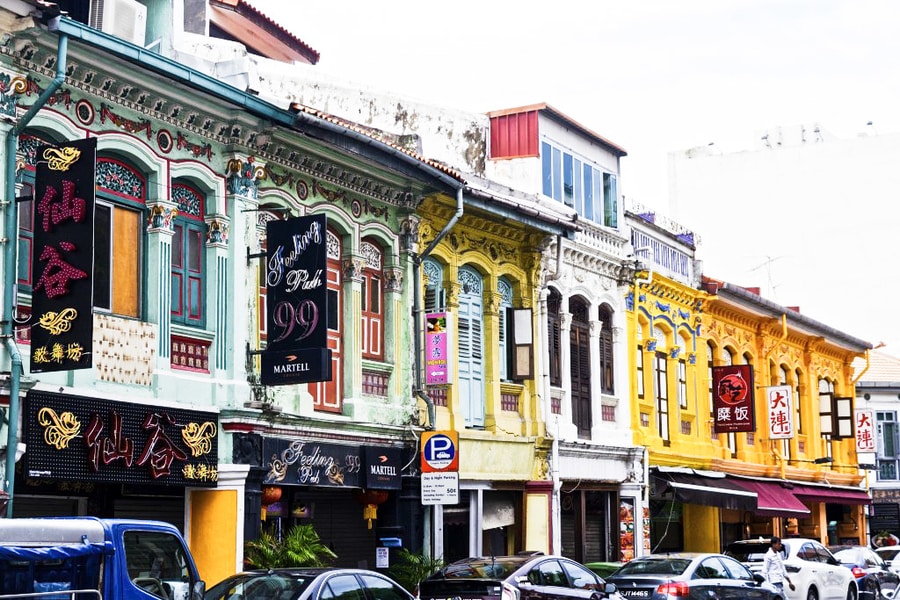
Walking the streets of Little India gave me a glimpse into one of Singapore’s largest immigrant districts. Temples adorned with Hindu Gods and demons rise above the picturesque houses and women mill about in saris.
Though I have yet to travel to India, I imagine that Singapore’s Little India provides a sampling of what I might find.
In the hour I spent wandering around Little India, I sat down for a plate of tandoori chicken, photographed the picturesque buildings, and ogled at the gaudy statues adorning the district’s temples.
-
SRI SRINIVASA PERUMAL
Dedicated to Vishnu, the Hindu tempe of Sri Srivinasa Perumal is one of the top places to see in Singapore’s Little India. Its colorful Tamil-style figurines illustrate the incarnations of Lord Vishnu.
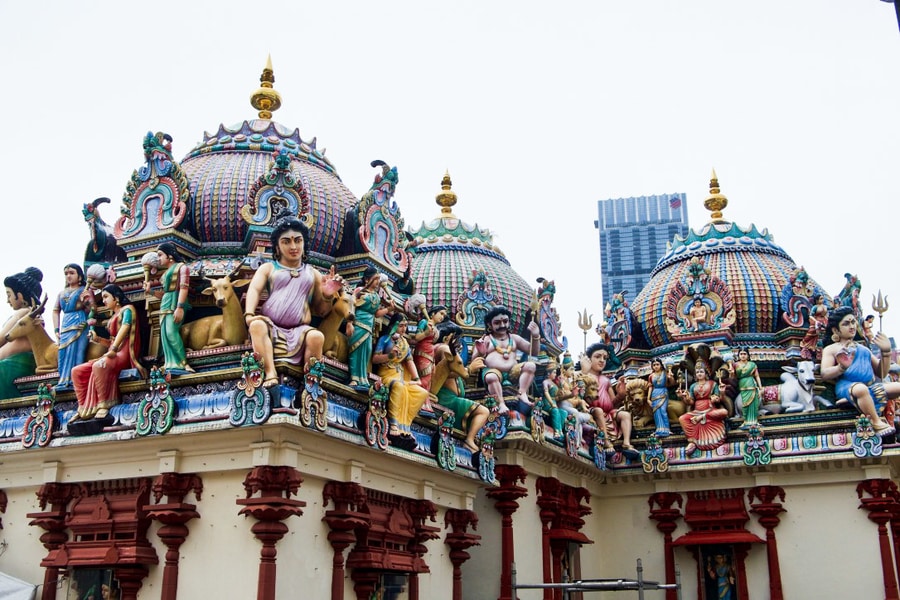
The temple dates back to 1855. However, its striking gopuram (tower) is a costly add-on that was built more than a century later.
-
SRI VEERAMAKALIAMMAN
Constructed in the style of South India’s Tamil temples, Sri Veeramakaliamman is overflowing with figurines of Hindu gods and goddesses.
The building is dedicated to the goddess Kali and dates back to 1881.
-
TAN TENG NIAH
The House of Tan Teng Niah stands out because of its striped colorful facade. Showcasing vibrant yellows, blues, greens and pinks, it the worst nightmare of modern American HOAs (though I personally love it!).
Tan Teng Niah is one of the last-surviving Chinese villas in a largely Indian enclave.
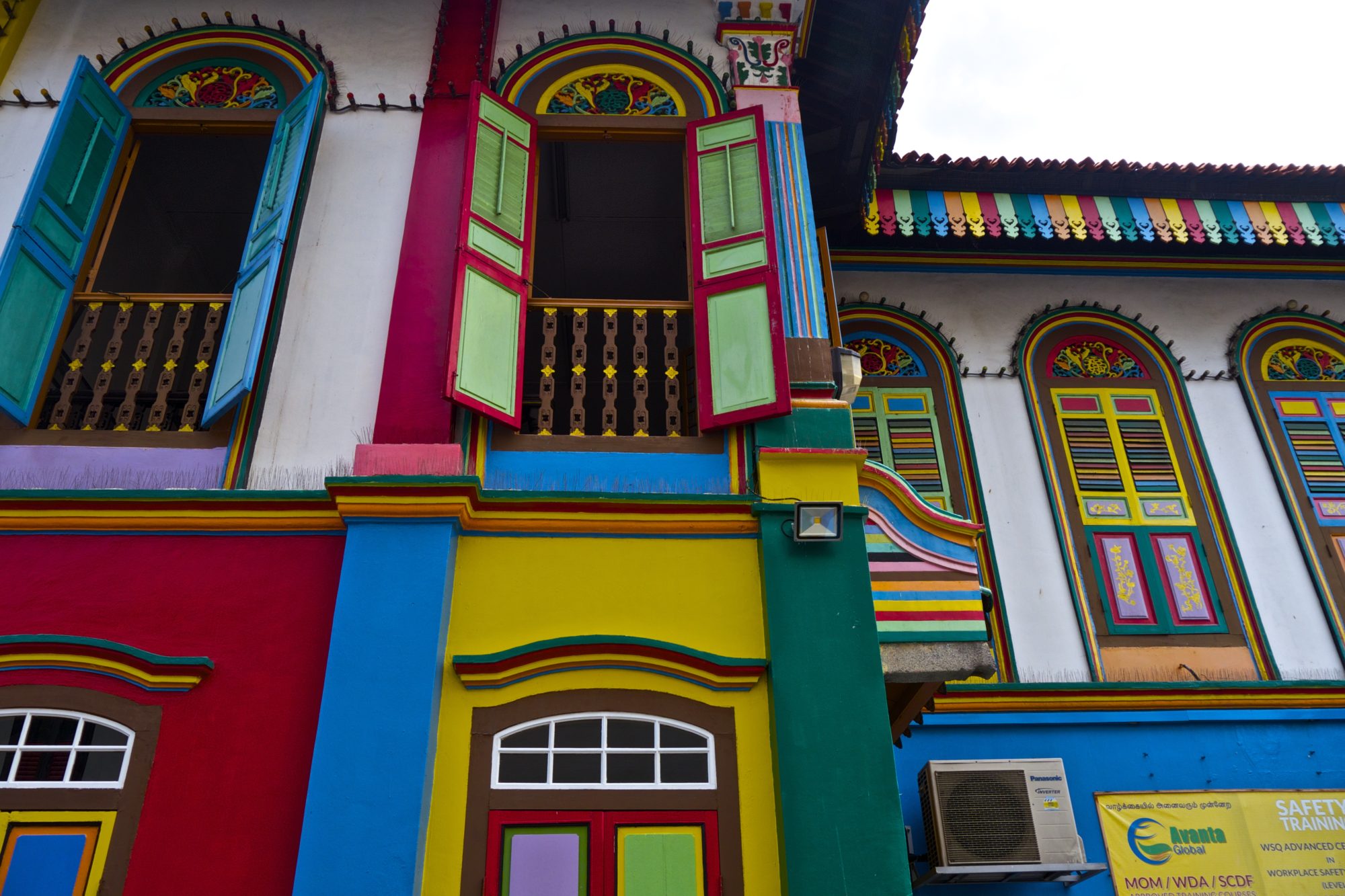
The building is a popular photo backdrop because of its Instagrammable color scheme.
KAMPONG GLAM: SINGAPORE’S MUSLIM NEIGHBORHOOD
In the early 19th century, the predominantly Muslim district of Kampong Glam became home to the Singapore’s Malay aristocracy. It attracted traders from Middle Eastern countries and grew into a diverse and multicultural Muslim community—containing a blend of Malay, Indonesian and Arab populations.
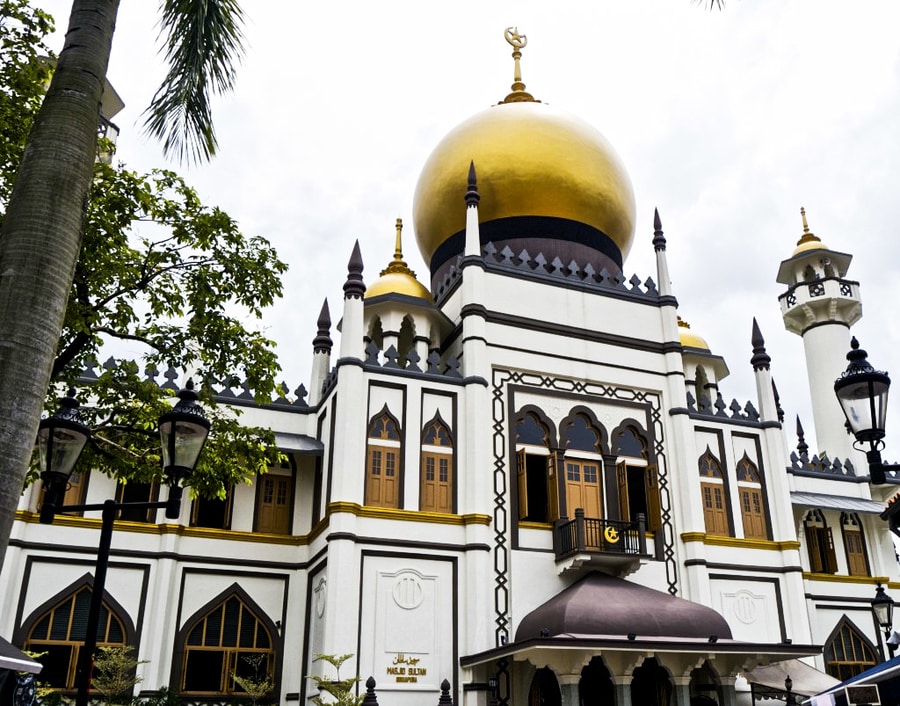
Today, the area is an aesthetically pleasing and culturally vibrant district, with its rows of textile shops, boutiques, curry houses and the imposing Sultan Mosque.
-
SULTAN MOSQUE IN SINGAPORE
The beautiful Masjid Sultan is the heart of Singapore’s Muslim community and the most recognizable building in Kampong Glam. It boasts beautiful golden onion domes and a delicate white and black facade.
CHINATOWN: HEART OF SINGAPORE’S CHINESE COMMUNITY
As its name suggests, Chinatown is Singapore’s historically Chinese neighborhood. It is chockfull of Buddhist temples and Daoist shrines.
More than any other area of Singapore, Chinatown illustrates the city’s multiculturalism. It showcases the ways in which Singapore’s diverse cultures and religions lie side by side.
For, though the area is best known for its Chinese influence, it is home to a sprinkling of mosques and Hindu temples as well.
Within a two block span, I saw the colorful sculptures of Sri Mariamman, the minaret of the Jamae Mosque and the upswept roof of the Buddha Tooth Relic Temple.
-
SRI MARIAMMAN
Singapore’s oldest Hindu temple, Sri Mariamman is an ornate and colorful place of worship that embraces South India’s Dravidian style.
Like the temples in Little India, it has a richly embellished gopuram that showcases some of Hinduism’s many deities.
-
JAMAE MOSQUE
The mint-green Jamae Mosque is one of the oldest Muslim places of worship in Singapore.
The Jamae Mosque’s eclectic architecture reflects the style of 1830s Singapore. While the entrance gate is distinctively South Indian, the two prayer halls and the shrine embrace the Neo-Classical style.
-
BUDDHA TOOTH RELIC TEMPLE
According to Indian and Sri Lankan legends, when the Buddha died in 543 BC, one of his teeth was retrieved from the funeral pyre.
The Tooth Relic Temple in Sinapore’s Chinatown is one of many locations around the world that is rumored to house the Buddha’s tooth. Another such location—and perhaps the most famous—is the Temple of the Scared Tooth Relic in Sri Lanka’s Cultural Triangle.
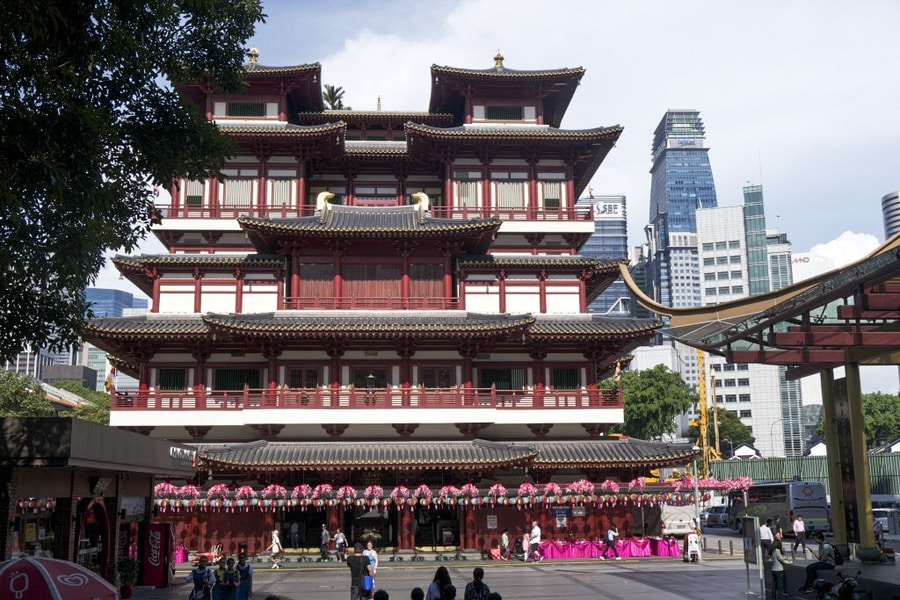
The temple’s architecture embraces elements from the Tang Dynasty. It is one of the more recognizable buildings in Chinatown.
COLONIAL BUILDINGS NEAR BOAT QUAY
My visit to Singapore led me to the mouth of the Singapore River, along a promenade that extends from Boat Quay to the heart of the city. The promenade affords views of British colonial buildings and the iconic Raffles Hotel.
Boat Quay was once Singapore’s center of commerce and the heart of the city’s maritime trading. Though Boat Quay is no longer associated with maritime trading, the shophouses that flank its riverbank have been carefully restored and now house tourist-friendly restaurants and bars.
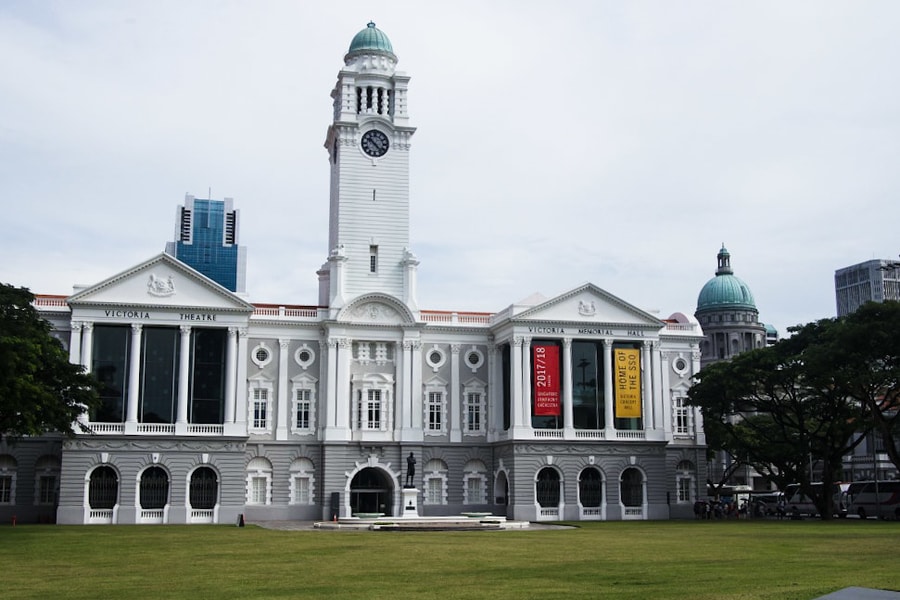
Much like the Bund in Shanghai, the architecture around Boat Quay is a testament to the city’s deeply entrenched colonial history.
MARINA BAY: AN ICONIC SINGAPORE ATTRACTION
If Singapore’s ethnic neighborhoods illustrate the city’s multicultural and storied past, the area around Marina Bay reveals its full-fledged race toward the future.
Bustling and vibrant, the trendy Marina Bay area of Singapore is perhaps the city’s most iconic. It houses the impressive Marina Bay Sands Hotel, a luxury shopping mall, and the sprawling Gardens by the Bay.

It is in this area that the city’s world-renowned architecture is most dramatically displayed.
SINGAPORE’S PARKS AND GREEN SPACES
While Singapore’s neighborhoods present a fascinating mix of old and new, a visit to Singapore would not be complete without an escape to its verdant retreats. For a densely packed country of its size, Singapore has a surprising amount of parks and green spaces.
From the beaches of Coney Island to the futuristic Gardens by the Bay, Singapore is a place where nature creeps into the urban landscape.

In 1963, the country’s founding Prime Minister, Lee Kuan Yew, envisioned a green city where trees and abundant flora would soften the harshness of the asphalt jungle. He wanted to give Singapore the sense of being a “City in a Garden.”
As the country continues to urbanize, the commitment to ensuring the city’s streets remain green has not wavered.
And today, nestled amongst the city’s urban landscape, a natural jungle of plants and wildlife flourishes.
THE SINGAPORE BOTANIC GARDEN
Singapore’s sprawling botanic wonderland is a UNESCO World Heritage Site and one of the city’s most arresting attractions. It is a leafy paradise that invites flower enthusiasts, nature lovers and casual wanderers.
Established in 1860, the sprawling garden is peppered with glassy lakes, rolling lawns, themed gardens and forested walking paths.
On my first visit to Singapore, I somehow skipped the Botanic Garden in favor of MacRitchie Park. When I returned to the city two years later, I made sure that my Singapore itinerary included a visit to the park.
Singapore’s botanical garden is truly a resplendent wonderland that deserves its World Heritage Site status. Even for travelers who only have one day in town, the garden is a top must-see attraction.
Visiting the Botanical Garden of Singapore is free, unless you plan on stopping by the National Orchid Garden.
-
THE NATIONAL ORCHID GARDEN
Singapore’s orchid garden lies within the larger botanic garden.
With over 1000 species and 2000 hybrids on display, the National Orchid Garden is a must-visit Singapore attraction for plant-lovers.
Entering the orchid garden incurs a $5 fee.
MACRITCHIE PARK
During my two days in Singapore, I spent the morning walking through the lush canopies at MacRitchie Park. The park is a great escape from city life with its lush vegetation, swinging bridges, and shaded hiking trails.
MacRitchie Park and Reservoir makes for a relaxing jungle escape. The park is easily accessible from the heart of the city and well-connected by public bus.
All around, macaques swing from the trees while chirping birds create a musical backdrop.
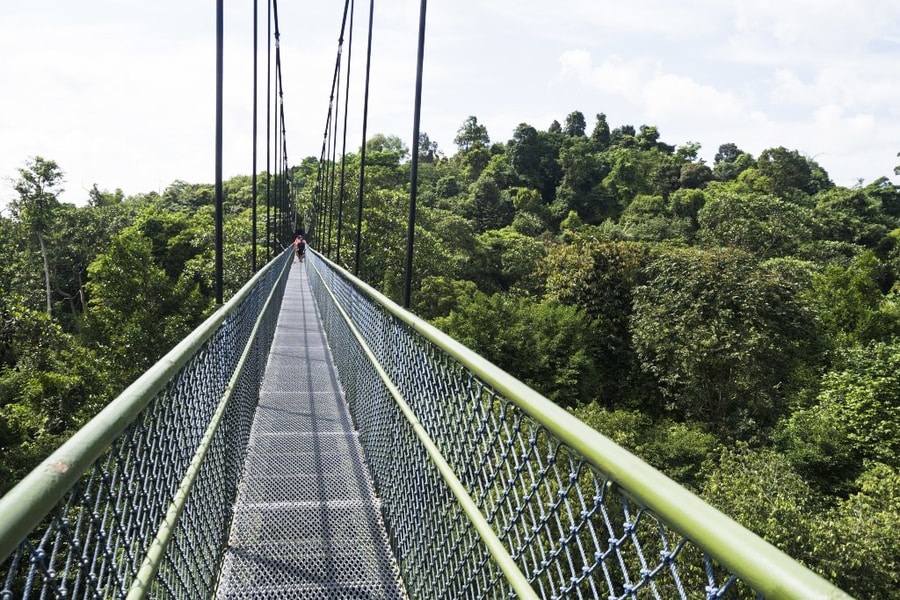
When visiting MacRitchie Park, it can be easy to forget that you’re in one of Asia’s largest and most cosmopolitan cities.
GARDENS BY THE BAY: A TOP TOURIST ATTRACTION IN SINGAPORE
I’ve traveled to Singapore twice and, each time, I ended my visit to the city with a walk around the magical Gardens by the Bay.
Visiting the large art installation is one of the top things to do in Singapore. The modern “garden” is a perfect representation of Lee Kuan Yew’s vision of integrating nature into urban areas and transforming Singapore into a “City in a Garden.”
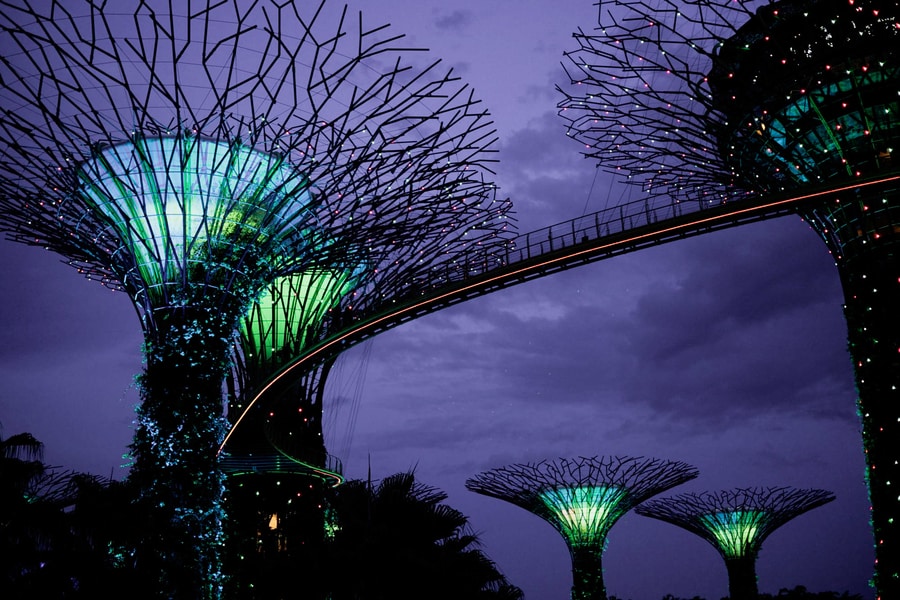
The horticultural wonderland spans over one hundred hectares of reclaimed land. Its tree-shaped vertical gardens are a dazzling display of brilliant lights and tangled vines. The whole area looks as though it was inspired by sci-fi.
While you can visit the garden at any time of day, the installation comes alive after nightfall.
With its colorful “trees” and twinkling lights, you should prioritize a visit after dark if possible.
-
SUPERTREE GROVE
As the centerpiece of the Gardens by the Bay, the Supertree Grove is a must-see. The installation features 18 “treelike” structures that are illuminated at night and adorned with natural vegetation. They are an iconic symbol of the city and a highlight of any Singapore itinerary.
You can enjoy areal views of the gardens if you purchase tickets for the Supertree Grove’s elevated walkways.
Due to budgetary constraints, I chose to skip out on the experience.
Instead, I laid down on a bench looking up—allowing myself to become fully absorbed by the visual and auditory display of music and lights.
-
THE FLOWER DOME
The Flower Dome at the Gardens by the Bay is the world’s largest glass greenhouse. Inside, colorful flowers, plants and palms adorn the indoor botanical garden.
-
THE CLOUD FOREST
Inside the Singapore Cloud Forest’s large greenhouse lies the tallest indoor waterfall in the world. The attraction is also host to a diverse array of plants from various tropical ecosystems.
Next time I visit Singapore, I’m going to make the Cloud Forest and Flower Dome a priority.
SENTOSA ISLAND
I didn’t personally spend any time on Sentosa on during my two day Singapore itinerary, but the island resort is the city’s top destination for beach-lovers.
Formerly used as a British military base and afterwards as a Japanese prison camp, the island was rebranded as Sentosa and transformed into a tourist destination. Its popular resort area receives more than twenty million annual visitors.
SINGAPORE CHANGI AIRPORT
It isn’t every day that I include airports in must-see lists, but Singapore’s Changi International is not just any ordinary airport. It is a tourist attraction unto itself.
Inside, the airport boasts a rooftop pool, a butterfly garden, the world’s tallest indoor waterfall, and a rock climbing wall.
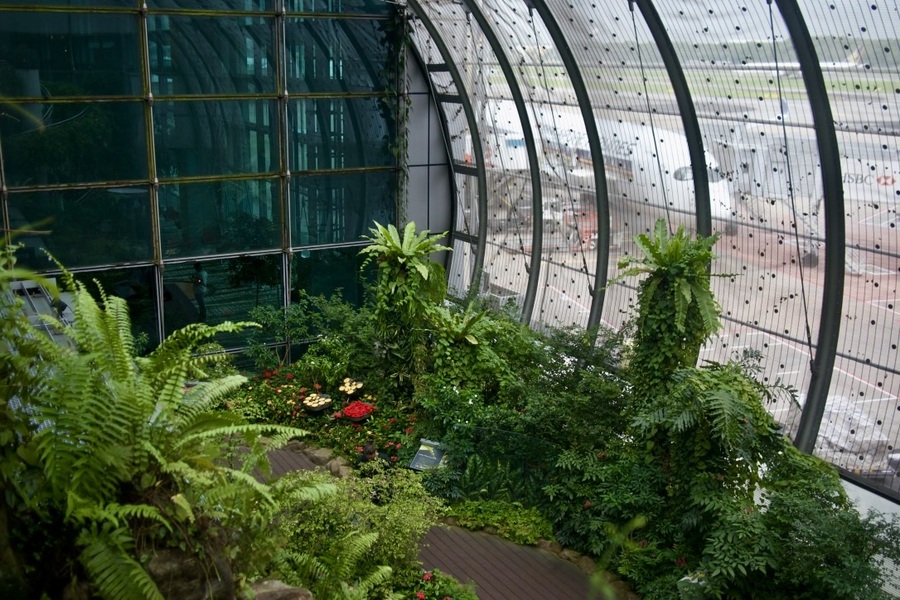
It isn’t difficult to see why the transportation hub of Singapore has been named the World’s Best Airport time and time again.
WHERE TO STAY IN SINGAPORE
If you’re used to Southeast Asian prices, lodging in Singapore might give you a bit of sticker shock. The prices are much higher here than they are in surrounding countries.
But if you look beyond opulent hotels like the Marina Bay Sands, the Four Seasons or Raffles, you’ll find a variety of accommodation options at different price points—from small hole-in-the-wall hostels to luxurious world-renowned hotels.
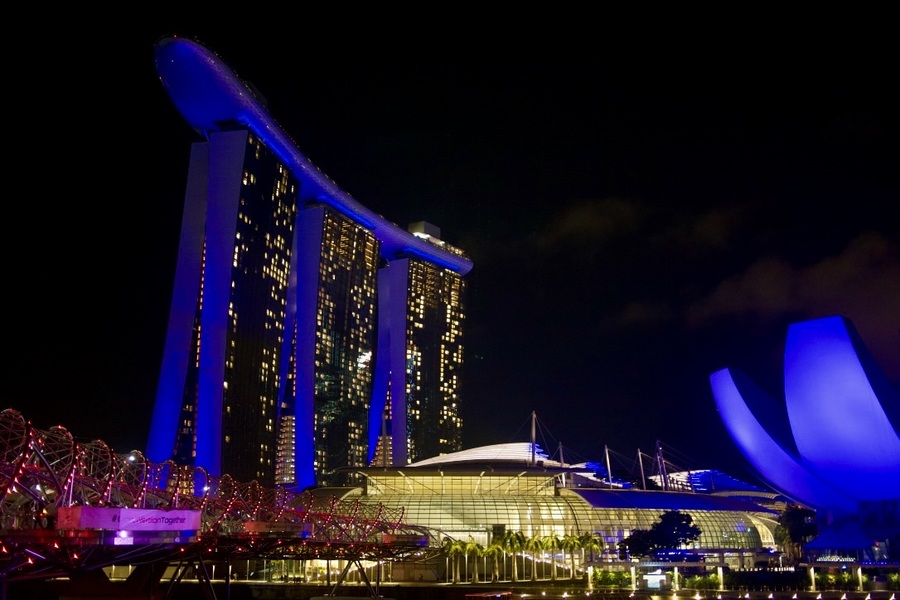
Hipstercity Hostel is a highly-rated place to stay for backpackers and budget travelers. While its dorm rooms are much more expensive than similar rooms in nearby countries, they are affordable by Singapore’s standards.
For those seeking a midrange option, the Clan Hotel boasts luxury amenities at a reasonable price-point.
If you are looking to splurge though, Singapore might just be the place to do it. The Marina Bay Sands in Singapore is a bucket list accommodation for many. It boasts the world’s largest rooftop infinity pool and is one of Singapore’s top attractions. If you have the means to stay at the luxury hotel, the Marina Bay Sands is a popular option that is unlikely to disappoint.
WHEN TO VISIT SINGAPORE
Singapore’s climate is hot and humid throughout much of the year, so there’s no need to pack winter woolies for your visit.
Although Singapore is—for the most part—a year-round destination, the months of February to April fall within Singapore’s dry season. They experience a bit less rainfall than the rest of the year, though torrential downpours are still relatively common.
Whatever time of year you choose to visit, you can expect heat. You can expect humidity. And you can expect rain.
Due to the northeast monsoon, the rainiest months in Singapore are November through January.
GETTING AROUND SINGAPORE
I mostly used my own two feet to get around Singapore.
But when I needed to travel longer distances or when I was pressed for time, I relied on the city’s clean and efficient public transportation system.
****
Despite my short two day visit to Singapore, I could immediately see that the small city-state has its eyes set on the future.
A walk around Singapore’s ethnic neighborhoods reveals a city that is at once forward-thinking and rooted in its multi-ethnic past.
And just as the city embraces its multicultural heritage in an increasingly globalized world, so too is it successful in finding a balance between green spaces and urbanization, and between progress and preservation.
____________________
DID YOU ENJOY THIS GUIDE TO SINGAPORE’S HIGHLIGHTS AND ATTRACTIONS? PIN IT!
